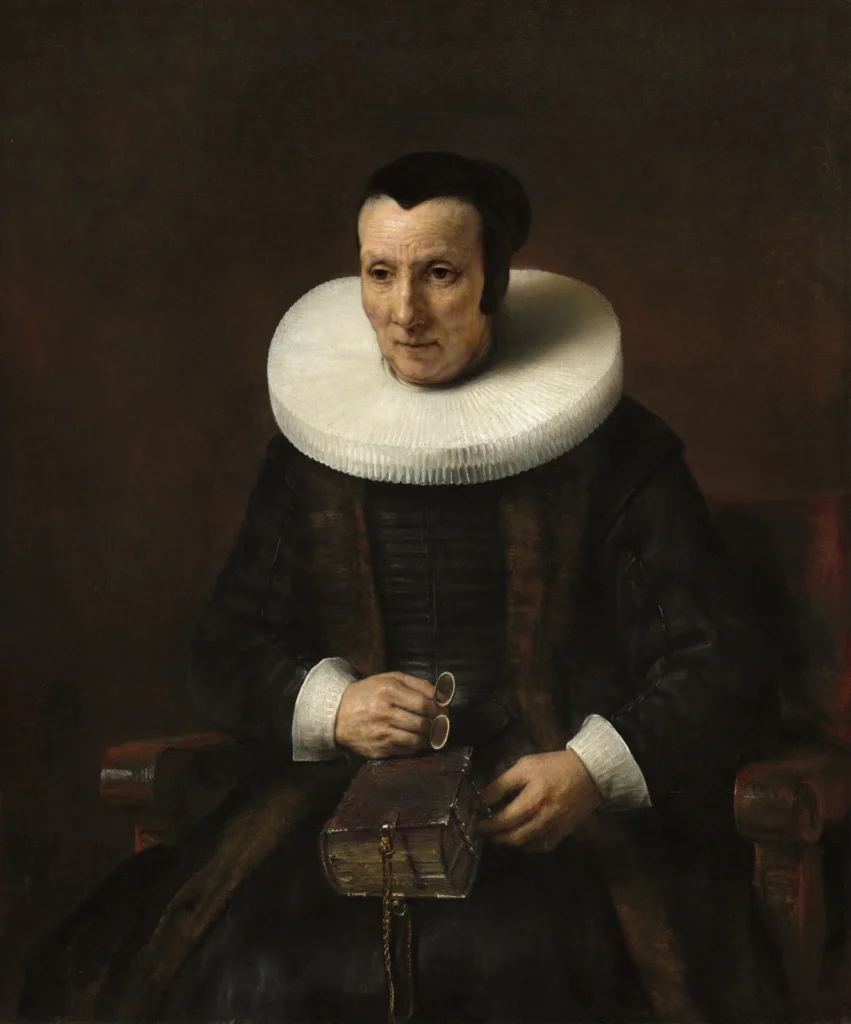An Old Lady with a Book
Rembrandt's An Old Lady with a Book is a captivating portrait that conveys the introspective nature of its subject, depicted as a pale-skinned woman seated in a wooden chair adorned in traditional black attire with a stark white ruff. Holding a Bible, she embodies the pious devotion of her era. The artwork not only showcases Rembrandt's mastery of light and shadow but also hints at his collaborative process with studio assistants for the background and costume details, highlighting the artist's dedication to realism.
Year 1637
About the Artwork
Created in 1637, An Old Lady with a Book captures the essence of a reserved woman deeply absorbed in her religious beliefs. Notably, the painting was executed during Rembrandt’s ascent as a prominent portrait artist in Amsterdam, reflecting both his technical prowess and the social dynamics of his time. The woman's contemplative expression and slight separation from the viewer evoke an intimate yet distant connection, demonstrating how painting can convey complex human emotions. Rembrandt's incorporation of studio assistance illustrates the collaborative nature of his work, making the harmony between craftsmanship and artistic vision palpable.
Did You Know
While Rembrandt is known for his personal input in his paintings, it is interesting to note that he often relied on studio assistants for executing details like costumes and backgrounds, a practice that demonstrates the layered complexity of his creative process.
Rembrandt’s inclusion of a Bible in this painting resonates deeply with the religious sentiments of 17th-century Dutch society, illustrating how artists used religious texts to reflect the values and beliefs of their subjects.
This artwork marks a shift in the tradition of portraiture, moving from grand displays of status and wealth to a focus on the inner life and contemplative states of individuals, establishing a new approach in art that prioritized emotional depth.










